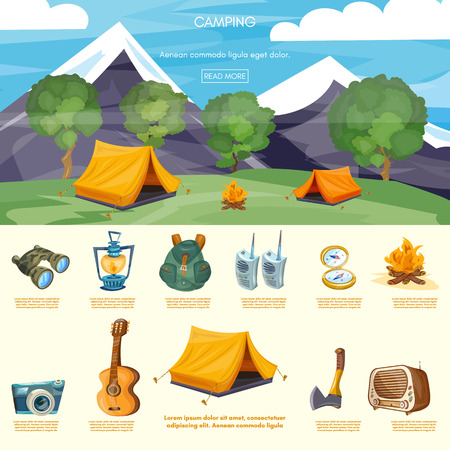Generating Sales By Selling Camping Tents
Generating Sales By Selling Camping Tents
Blog Article
How to Pick a Tent Footprint
Whether you need a camping tent impact relies on where and just how often you will be camping. The footprints offered by the manufacturer of your tent are typically a great option however they can be costly and heavy (the NEMO Hornet Dragonfly 2P footprint weighs 6.9 oz).
How long does canvas tent last?
You can also make your own DIY tent footprint from inexpensive, hard wearing material such as a tarp groundsheet. Nevertheless, a DIY footprint may not be perfect for keeping your tent clean of mud or tree sap.
Dimension
An outdoor tents impact is basically a sheet that goes under your camping tent. It secures the ground beneath your camping tent from rough items, and it keeps the bottom of your tent clean and dry. It additionally lowers the quantity of warm shed to the ground while you sleep, and it can help shield your tent from dampness.
The most effective outdoor tents impacts are sized exactly to match the floor space of your tent. They are usually constructed from a sturdy, water-proof product like polyurethane or nylon. Nguyen suggests choosing a footprint with a denier rating of 250 or greater for maximum sturdiness.
Numerous outdoor gear business offer their own branded tent impacts that are created to fit effortlessly with the corresponding tent. Nevertheless, these can be rather expensive and add to the total weight of your backpacking arrangement. For these factors, we typically recommend using a do it yourself alternative instead.
Material
A tent impact keeps the floor of your sanctuary tidy, particularly if you are camping in areas with a great deal of rainfall. It can likewise help protect against water from merging up beneath your tent which can leakage into the outdoor tents itself.
The product utilized in an outdoor tents impact varies, but one of the most typical is an easy-to-clean and resilient polyurethane or polyester textile. Some included a sack to separate them from your equipment when not being used.
Some backpackers choose to make their very own DIY footprints out of Tyvek home cover or Polycryo window insulation shrink movie. This is typically a less expensive and lighter option than acquiring a producer specific one. It is necessary to keep in mind, however, that a do it yourself footprint will certainly not safeguard against punctures or abrasions as well as a high quality tent floor covering. If you are utilizing a homemade footprint, make certain to roll up the edges so it does not gather water. If you're fretted outdoor tent about this, consider updating to a much more strong choice like the ones made by producers.
Waterproofness
An outdoor tents footprint includes an additional layer of waterproofing beneath your outdoor tents, which safeguards against puddles that may collect underneath your sanctuary. This can make your camping experience much more comfy, particularly on wet ground, where you could or else wake up grouchy and wet from water dripping into your outdoor tents.
Camping tent footprints are usually developed especially for the outdoor tents design they're planned to go along with, which ensures an excellent fit and a solid waterproof seal. Nonetheless, they're likewise readily available as generic items that can be cut to size with scissors or a blade.
Footprints made from high-denier textiles like Tyvek and Polycryo are normally more pricey than those made of a reduced denier fabric, such as nylon. Whether the greater cost deserves the added waterproofing is up to you.
Weight
An outdoor tents footprint is a slim sheet of polyurethane, nylon or polyester that sits in between your sanctuary and the ground when camping. It's made to safeguard your outdoor tents from abrasive aspects like rugged rocks, branches and abrasive surface areas, clarifies Elizabeth Nguyen, a senior sales expert at REI in Atlanta.
Nguyen says most outside gear producers supply their own well-known camping tent footprints that are created to fit seamlessly with their marked tents, including satisfaction and benefit. Yet these branded impacts often tend to be thicker and heavier than do it yourself alternatives that are offered on the marketplace, so they deserve a better look when searching.
If you're on a budget plan or are prioritizing weight, it's very easy to make your own tent impact making use of simple materials that can be located at most hardware or DIY shops. This alternative is popular among ultralight backpackers and long-distance hikers to conserve money and save weight where feasible. It's additionally worth noting that many camping tents are currently made with a sewn-in groundsheet, so an outdoor tents footprint may be unnecessary in these situations.
Where do you put a tent on a backpack?
